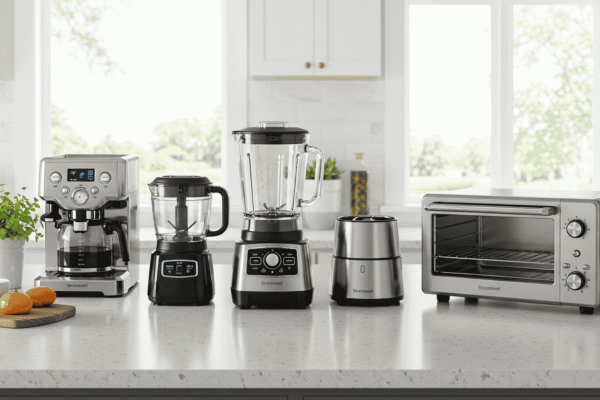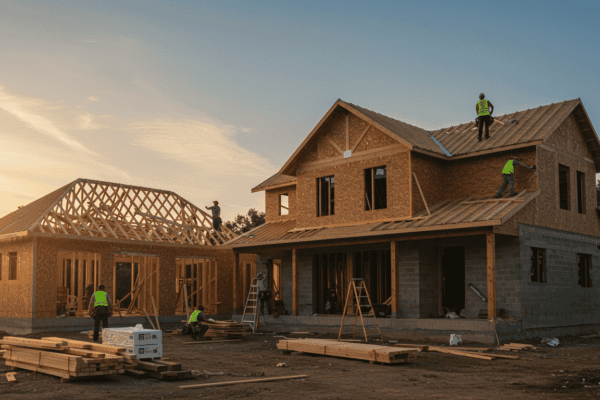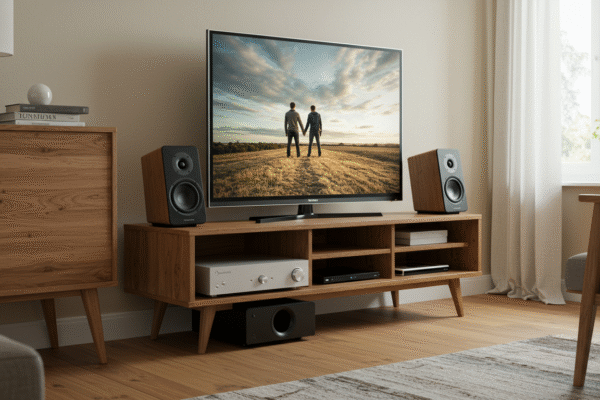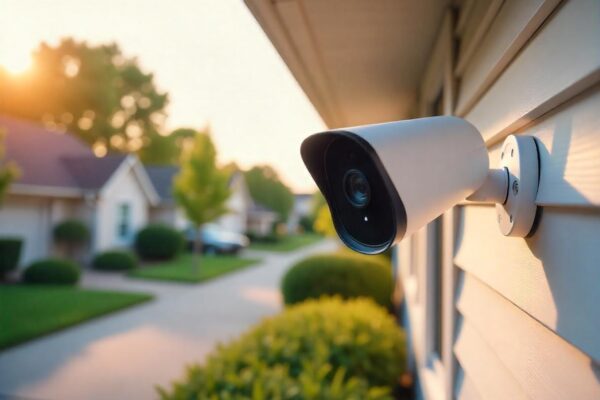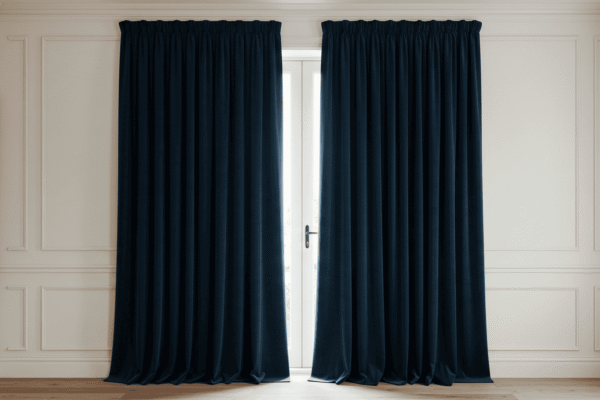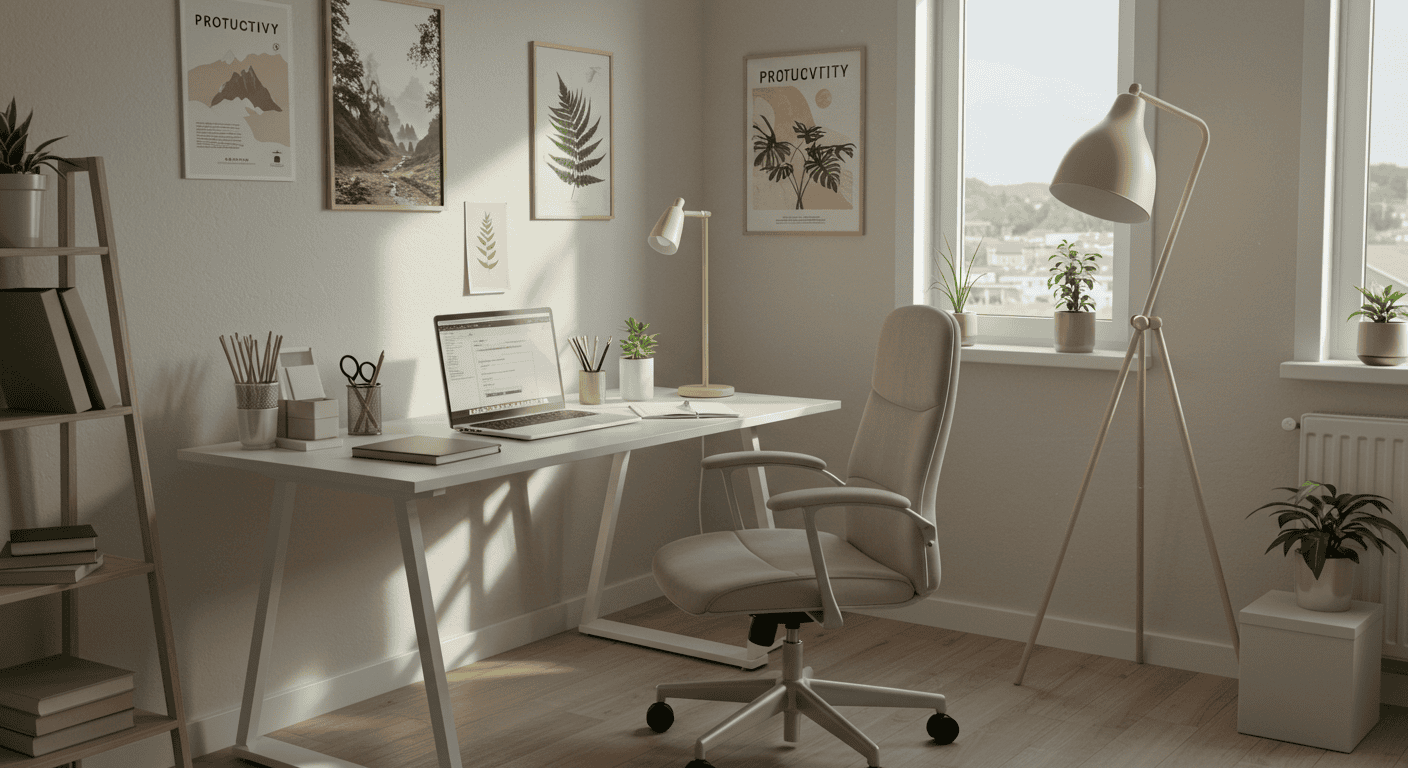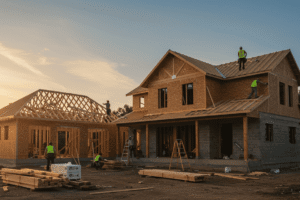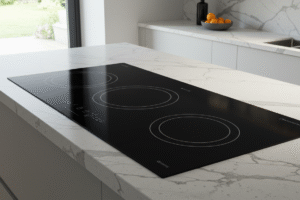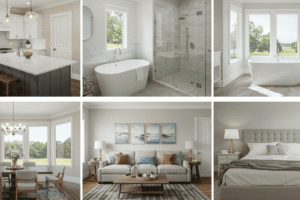How to Create a Productivity Zone in Your Home starts with understanding that your environment directly affects your ability to focus and perform. A well-designed productivity zone isn’t just about furniture and gadgets—it’s about building a space that helps you get into the flow, stay organized, and feel energized. Whether you’re working, studying, or pursuing a creative passion, this guide will walk you through the key steps to turn any space—big or small—into a zone that works for you. Let’s dive into the art of designing your personal productivity hub at home.
Why You Need a Dedicated Productivity Zone at Home
Creating a productivity zone within your home is essential for maintaining focus and achieving your goals efficiently. When you designate a specific area exclusively for work or study, your brain starts associating that space with concentration and productivity. This mental association helps reduce the constant battle with distractions and increases your ability to stay on task. Without a dedicated zone, work can easily bleed into other areas of your life, making it harder to separate professional and personal time.
The Science Behind Focus and Environment
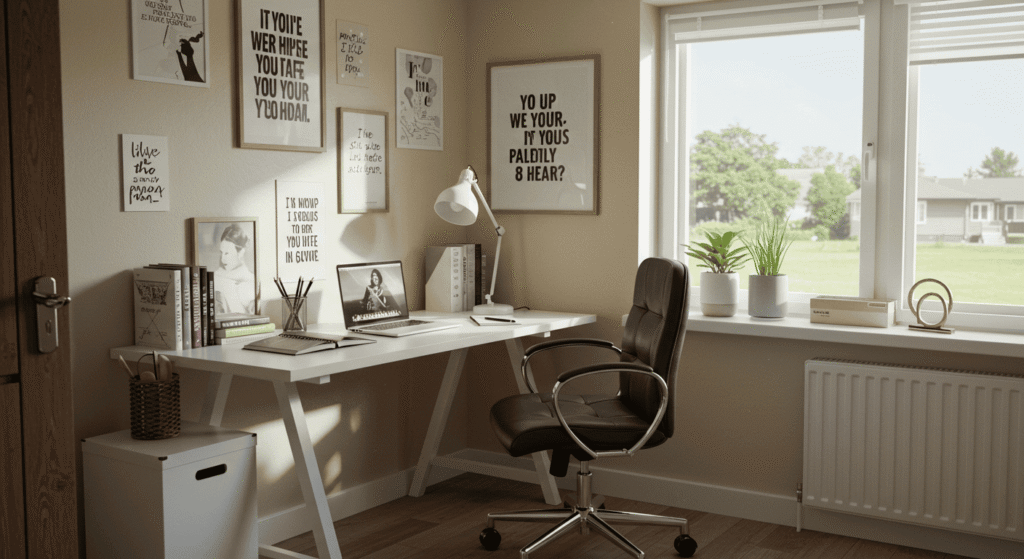
Research shows that our environment has a significant impact on our ability to concentrate. A well-defined productivity zone signals to your brain that it’s time to focus, reducing cognitive load caused by switching between different contexts. When distractions are minimized, the brain can enter a state of “flow,” leading to increased creativity and efficiency. The layout, lighting, and organization of your workspace all play roles in supporting this focused state, making it easier to sustain long periods of productive work.
Common Home Distractions and How a Productivity Zone Solves Them
Typical distractions in a home setting include noise from family members, household chores, digital notifications, and the temptation of leisure activities. These interruptions fragment your attention and decrease your overall output. By establishing a productivity zone, you physically separate your work from distractions. This separation creates boundaries that help others in your household understand when you’re unavailable and minimizes visual and auditory disruptions. Additionally, organizing your zone with tools and routines tailored for productivity further reduces the chance of getting sidetracked.
Quick Self-Assessment: Is Your Current Workspace Holding You Back?
To help you evaluate whether your current setup supports or hinders your productivity, consider the following checklist:
| Question | Yes | No |
|---|---|---|
| Do you have a specific area dedicated to work or study? | ||
| Is your workspace free from frequent interruptions? | ||
| Does your setup promote good posture and comfort? | ||
| Is your workspace organized and clutter-free? | ||
| Are you able to maintain focus for extended periods? |
If you answered “No” to any of these, it may be time to rethink your productivity zone. Improving your workspace can lead to better focus, less stress, and higher efficiency.
Choosing the Right Spot for Your Productivity Zone
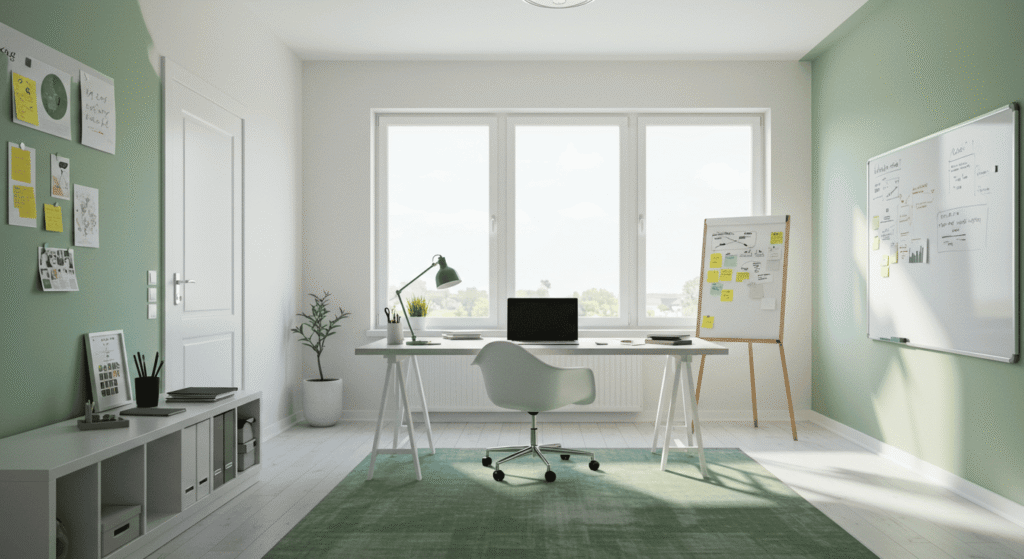
Finding the ideal location for your productivity zone is crucial to creating an environment that supports focus and efficiency. The right spot considers factors like lighting, noise levels, and available space. Whether you have a spacious room or just a small corner, selecting a place that aligns with your working style can make a significant difference in your overall productivity.
Natural Light vs. Artificial Lighting: What Works Best?
Natural light is one of the most effective tools to boost mood, energy, and concentration. Positioning your productivity zone near a window allows you to benefit from daylight, which can reduce eye strain and improve alertness. However, not all spaces have access to sufficient natural light. In these cases, quality artificial lighting becomes essential. Using adjustable task lights that mimic natural light can help maintain focus and reduce fatigue, especially during evening hours or in dim rooms.
Quiet Corners and Noise Control Strategies
Noise is a common distraction in many homes, so choosing a quiet corner can help protect your focus. Look for spots away from high-traffic areas like the kitchen or living room. To further control noise, consider using soft furnishings like rugs and curtains that absorb sound, or invest in noise-reducing tools like headphones or white noise machines. Creating clear boundaries around your productivity zone also signals to others when you need uninterrupted time.
Space Size: Big or Small — What Matters More?
Whether your productivity zone is a dedicated room or a small nook, effectiveness depends more on how you use the space than its size. A well-organized small area can outperform a cluttered large room. Focus on maximizing comfort, minimizing distractions, and organizing tools within easy reach. For larger spaces, consider zoning different areas for varied tasks — for example, separating creative brainstorming from focused writing — to keep your workflow dynamic and efficient.
Essential Elements to Include in Your Productivity Zone
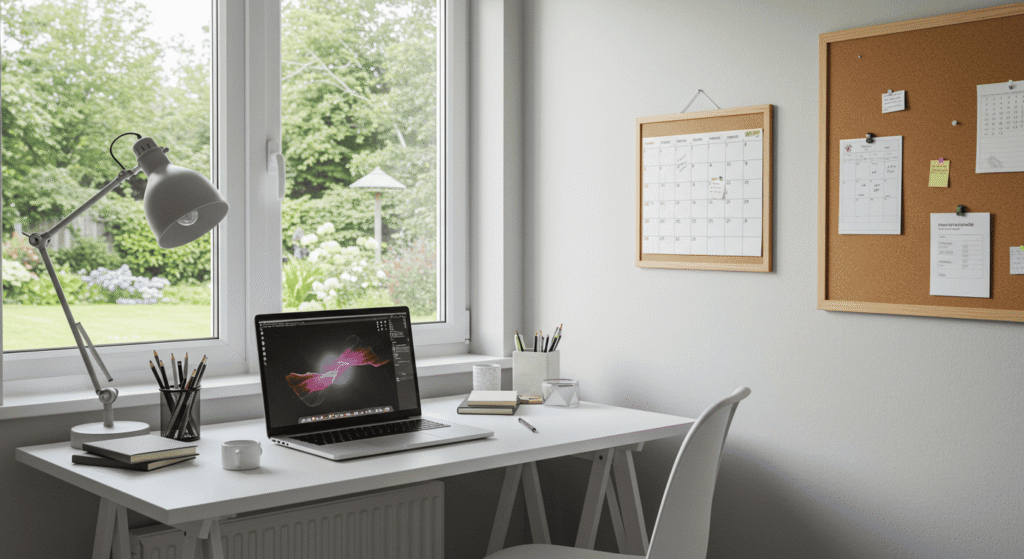
Designing a productivity zone that supports both comfort and focus involves carefully selecting key elements that enhance your work experience. Incorporating the right furniture, lighting, and décor can transform your space into a place where productivity naturally flows.
Ergonomic Furniture: Comfort Meets Productivity
Ergonomic furniture is vital for maintaining comfort during long work sessions, which directly impacts your productivity. Investing in an ergonomic chair that supports your posture and reduces strain helps prevent fatigue and discomfort. Similarly, choosing the right desk—whether adjustable for sitting or standing—allows you to change positions throughout the day, boosting circulation and reducing stiffness. These choices contribute to sustained focus and reduce the risk of physical discomfort that can distract you from your tasks.
Lighting and Ambiance: Setting the Mood to Work Smart
Proper lighting is essential in a productivity zone to keep your energy levels high and reduce eye strain. Task lighting, such as adjustable desk lamps, provides focused illumination for detailed work, while ambient lighting creates a comfortable overall atmosphere. Balancing both types ensures you can work effectively without feeling fatigued. Additionally, using warmer tones in ambient light can create a calming environment, while cooler tones tend to energize and sharpen attention.
Greenery and Décor: How Indoor Plants Can Refresh Your Mind
Adding indoor plants to your productivity zone offers more than just aesthetic appeal. Studies show that having greenery nearby can reduce stress, improve air quality, and boost overall mood. Plants create a calming effect that helps clear mental fog and enhances concentration. Choosing low-maintenance plants is a smart way to bring these benefits into your workspace without adding extra responsibility or clutter.
Organizing Your Workspace for Maximum Efficiency
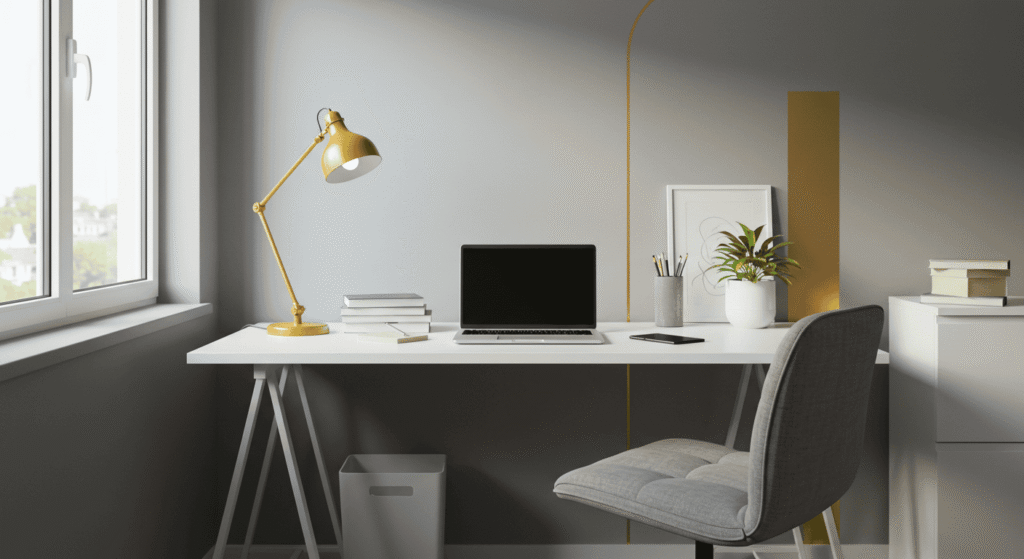
A well-organized productivity zone is key to maintaining focus and working efficiently. When your space is tidy and everything is within reach, it minimizes distractions and saves time spent searching for materials or files. Organization goes beyond just neatness—it creates a workflow that supports your productivity goals.
Decluttering Tips: Digital and Physical
Decluttering isn’t only about clearing physical mess; your digital environment matters just as much. For physical clutter, start by sorting papers, cables, and supplies—keep only what’s necessary and store or recycle the rest. Use cable organizers or clips to prevent tangling and keep your desk surface clean. Digitally, organize your files into clear folders, delete unnecessary documents, and use apps or tools that help manage your to-do lists and calendar efficiently. Regular digital decluttering keeps your workflow smooth and stress-free.
Organizational Tools That Make a Difference
Smart storage solutions can enhance your productivity zone without overcrowding it. Consider vertical shelving to save floor space, drawer dividers to keep small items orderly, and containers or baskets to group similar supplies. Use clear labels to quickly identify contents and reduce time spent searching. The key is to balance accessibility with neatness so your tools are easy to find but don’t create visual clutter.
Table: Before and After Decluttering Examples
| Aspect | Before Decluttering | After Decluttering |
|---|---|---|
| Desk Surface | Papers, tangled cables, scattered pens | Clean desk, cables managed, supplies in containers |
| Digital Files | Random files on desktop, no folders | Organized folders, clear naming system |
| Storage Spaces | Overfilled drawers, unmarked boxes | Labeled drawers, categorized storage |
Seeing the difference visually can motivate you to create and maintain an efficient workspace that truly supports your productivity.
Technology and Tools to Enhance Your Productivity Zone
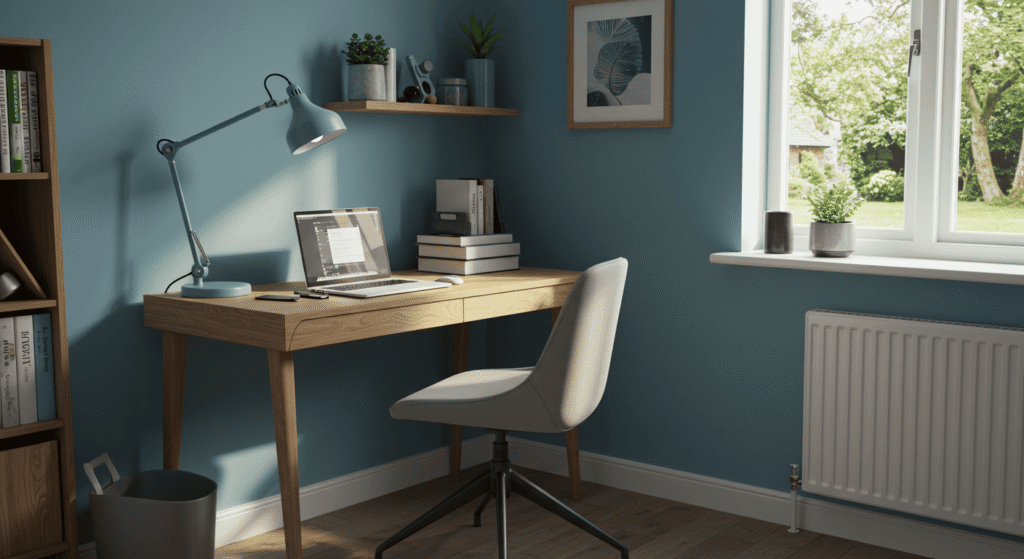
Integrating the right technology and tools into your productivity zone can significantly boost your efficiency and help maintain focus. Choosing tools that support your workflow without overwhelming you is essential to creating a balanced and effective workspace.
Must-Have Tools for Focus and Time Management
Using productivity apps and techniques can keep you on track throughout the day. Timer methods like the Pomodoro Technique—working in focused intervals with scheduled breaks—help maintain energy and prevent burnout. Additionally, noise-canceling headphones or apps that provide ambient sound can block out distractions, allowing you to concentrate better in noisy home environments. Combining these tools can create a powerful system to manage your time and focus effectively.
Digital Minimalism: Avoiding Tech Overload
While technology supports productivity, too many devices or apps can become a distraction. Practicing digital minimalism means streamlining your tools to those that truly add value. Turn off non-essential notifications, limit the number of open tabs or apps, and set specific times to check emails or messages. This approach helps reduce cognitive overload, allowing you to focus more deeply on your work within your productivity zone.
Cable Management Tips to Keep Your Space Clean
Unruly cables can clutter your workspace and cause unnecessary stress. Simple hacks like using cable clips, zip ties, or sleeves keep wires bundled and out of sight. Labeling cables can also save time when unplugging or troubleshooting devices. By managing cables effectively, you maintain a clean, organized productivity zone that supports both aesthetics and functionality.
Creating a Routine That Maximizes Your Productivity Zone
Building a routine that complements your productivity zone transforms your workspace from just a place into a productivity powerhouse. When your daily habits align with your environment, it becomes easier to maintain focus, manage time, and stay motivated throughout the day.
Time Blocking and Scheduling Your Workday
Time blocking is a technique where you divide your day into dedicated segments for specific tasks or activities. Your productivity zone acts as a physical anchor for these blocks, helping your brain switch into “work mode” when you enter the space. By scheduling focused periods of work interspersed with breaks, you avoid burnout and increase efficiency. Using calendars or planners can help keep your blocks organized and your day intentional.
Energizing Break Ideas Within Your Zone
Taking regular breaks is crucial for sustained productivity. Incorporate quick exercises like stretches or simple yoga poses to refresh your body without leaving your workspace. Mindfulness practices such as deep breathing or short meditation sessions can reset your focus and reduce stress. These energizing moments help maintain high energy levels and mental clarity while working in your productivity zone.
Personalizing Your Zone Without Overcrowding
Adding personal touches to your productivity zone can boost motivation and make the space feel welcoming. Choose items that inspire you—such as artwork, motivational quotes, or a small collection of meaningful objects—but avoid overcrowding, which can become distracting. The goal is to create an environment that feels uniquely yours while supporting concentration and calm. A well-balanced, personalized space can help keep you engaged and productive throughout the day.
Dealing with Challenges in Your Productivity Zone
Even the best productivity zone can face challenges like interruptions, motivation dips, or the need to switch tasks. Addressing these hurdles proactively ensures your workspace remains a powerful tool rather than a source of frustration.
Handling Interruptions and Family Distractions
Working from home often means sharing space with family or roommates, which can lead to unexpected interruptions. Setting clear boundaries and communicating your work hours helps others respect your focus time. Using visual signals—like a closed door or a specific sign—can remind household members when you shouldn’t be disturbed. Additionally, scheduling breaks to connect with others can reduce the chances of interruptions during work periods.
What to Do When Motivation Slumps
Motivation naturally fluctuates, but small mental shifts can help you regain momentum. Try breaking tasks into smaller, manageable steps to make progress feel achievable. Adjusting your environment—such as changing your lighting, rearranging your desk, or adding a motivating quote—can refresh your mindset. Incorporating short movement breaks or switching between different types of work also keeps energy levels up and staves off burnout.
Flexibility: Adapting Your Zone for Different Tasks
Not all work is the same; creative tasks often need a different setup than administrative duties. Design your productivity zone with flexibility in mind, allowing easy adjustments to your seating, lighting, or tools. For example, a clutter-free desk might work best for focused writing, while a whiteboard or bulletin board could support brainstorming sessions. Being able to quickly modify your environment based on the task at hand keeps your productivity sharp and your workflow smooth.
Measuring Your Productivity Zone’s Success
To ensure your productivity zone is truly helping you work smarter, it’s important to regularly evaluate its effectiveness. Tracking progress and knowing when to make adjustments keeps your workspace aligned with your evolving needs.
Tracking Your Productivity Gains
Keeping track of your productivity helps you understand what’s working and where improvements are needed. Simple methods like journaling daily accomplishments, noting how many tasks you complete, or timing focused work sessions can provide valuable insights. Reflecting on your energy levels and distractions experienced during the day also helps you fine-tune your productivity zone and routines.
Table: Productivity Before and After Setting Up Your Zone
| Metric | Before Productivity Zone | After Productivity Zone | Notes/Observations |
|---|---|---|---|
| Number of Tasks Completed | |||
| Hours of Focused Work | |||
| Frequency of Interruptions | |||
| Energy Levels During Work | |||
| Overall Work Satisfaction |
Use this table to record your personal progress and visually see the benefits of creating a dedicated productivity zone.
When to Reassess and Revamp Your Space
Your needs and work habits will evolve over time, so it’s important to know when your productivity zone needs a refresh. Signs include frequent distractions, feeling uninspired, or a decrease in productivity despite your best efforts. When this happens, consider rearranging furniture, updating lighting, or adding new organizational tools. Regular reassessment ensures your workspace continues to support your best work every day.
Making Your Productivity Zone Work for You
How to create a productivity zone in your home is more than just setting up a workspace—it’s about designing an environment that supports focus, efficiency, and well-being. If you’re wondering how to create a productivity zone in your home that actually works, start by choosing the right spot and organizing it thoughtfully. Learning how to create a productivity zone in your home means understanding your habits, distractions, and energy patterns. With helpful tools and mindful routines, you can fully master how to create a productivity zone in your home that keeps you motivated every day. Over time, you’ll see that how to create a productivity zone in your home is also about staying adaptable and open to change. Whether you’re just starting or optimizing, knowing how to create a productivity zone in your home is key to long-term success and productivity.

